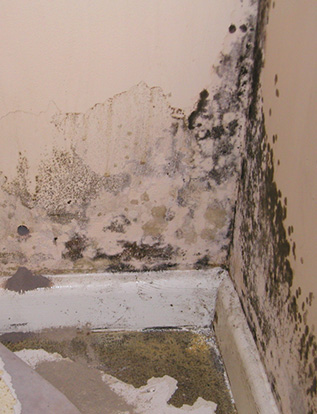Identifying and solving building problems environmentally without the use of chemicals
+44 (0) 1908 266522
Site Hazard Investigation
Toxic Mould Surveys

Mould
Airborne moulds are ubiquitous and have evolved to exploit the man-made spatial ecosystems of our built environment, where they manipulate the microclimates and ecological niches of our buildings and feed on a variety of substrates. The problems of occupational exposure to moulds are not new but are gaining new prominence for the following reasons:
- Toxic mould and its health implications and legal cases throughout Europe and USA
- Demands for better standards of living to improve the health, comfort and productivity of the occupants.
- Increase in the incidence of allergic reactions in susceptible individuals.
- Energy conservation measures leading to sealed buildings.
In the last century the management of mould problems in buildings has largely relied on misunderstanding and misdiagnosis of the biology, ecology and physiology of the causal organisms. Exposure to moulds and indoor allergens is a risk factor for the development of allergic reactions and the incidences of these problems are increasing at an alarming rate.
Most common micro-organisms in indoor air are as follows; Cladosporium spp., Penicillium spp., Aspergillus spp., Yeasts, Eurotium herbariorum, Wallemia spp. Other micro-organisms include Bacteria, Viruses, Actinomycetes and Pollens.
Most common moulds from dust indoors are as follows; Alternaria alternata, Aspergillus versicolor, Aureobasidium pullulans, Mucor spp., Phoma spp., Yeasts and Bacteria, Actinomycetes, House Dust Mite.
Allergy problems in buildings reflect in the health, comfort and productivity of the occupants, often increasing the rate of sickness in the work place.
The fundamental understanding and close dialogue between employees and human resources; facilities managers, health & safety officers; architects, engineers and building health specialists is essential in order to identify, evaluate, monitor and remedy allergic reactions in buildings. Allergic reactions in buildings is a complex issue and allergic signs and symptoms, types of allergies, indoor allergens and their management is a growing concern to employers and it requires a multidisciplinary, integrated approach.
Buildings that suffer from dampness (rising or penetrating dampness), moisture problems due to condensation, fire and flood damage can significantly higher the number of micro-organisms in the indoor environment. This creates problems for allergic patients. A prolonged residual moisture problem may also cause issues for non-allergic people, who may develop several of the mucosal and general symptoms.
Want to find out more?
For a friendly no obligation chat on this and any of our other services, please give us a call on 01908 266522 or email us on ebs@ebssurvey.co.uk. We'll help you find the right solution to your building problems.

